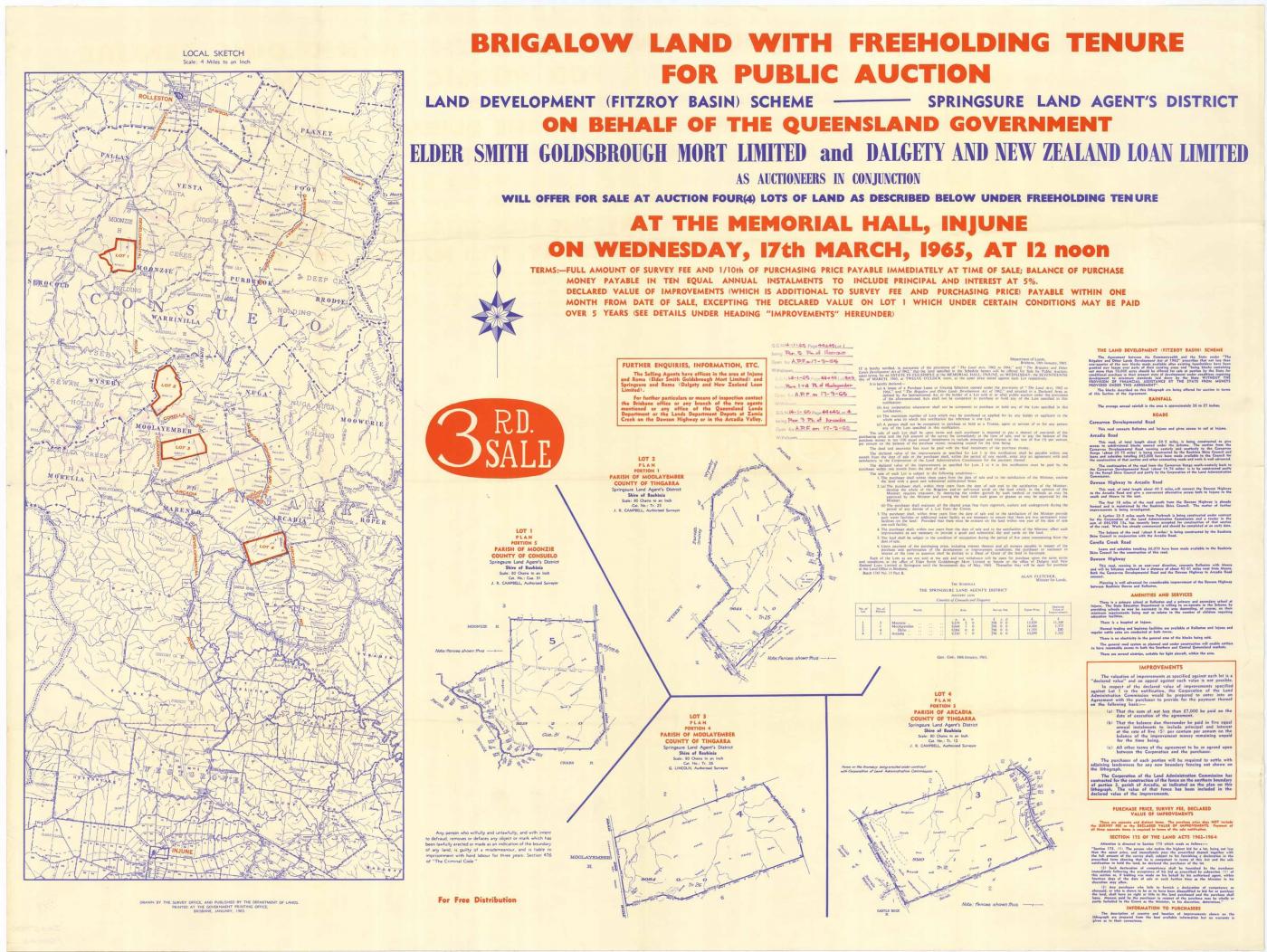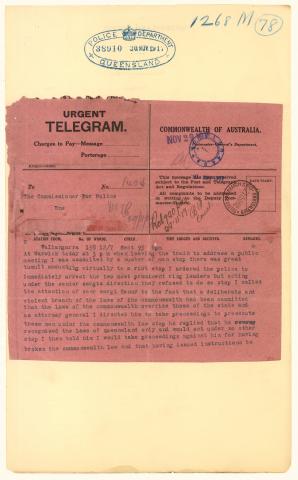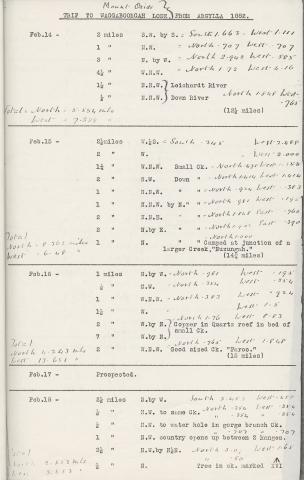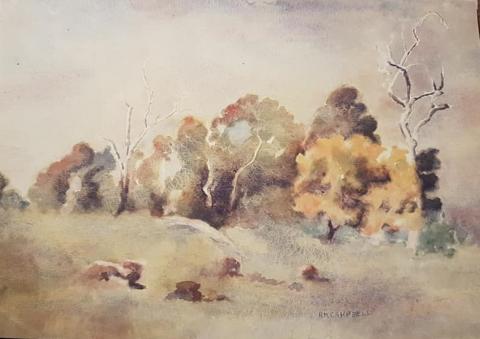
- Background
-
Until the early 1950s the Brigalow Belt, largely composed of Acacia and Casuarina, was the largest undeveloped expanse of woodland in the higher rainfall districts of Queensland. By 1953 approximately one-third of the five million hectares of what was believed to be prime agricultural and grazing land had been cleared, though it was soon apparent that the rapid regrowth of the native vegetation and its resistance to fire would hinder development. To encourage clearing and settlement the Queensland Government passed a Lands Act in 1959, the provisions of which made available 40-year leaseholds of up to 4000 hectares. Assisted by Federal funding, 52 of these blocks had been allocated by ballot in May 1964 and the following year further blocks were made available through public auction. Contrary to expectations, however, the majority of leaseholds were taken up by pastoral firms, for the expense of clearing with heavy machinery and the control of regrowth not only proved beyond the means of individuals, the land itself was better suited for grazing purposes rather than agriculture. While the sowing of exotic grasses has extended the fattening season and greatly increased productivity, the environmental consequences of large-scale clearing in the Brigalow Belt still remains to be seen. There is evidence which suggests that massive erosion could become a serious problem in the future.



